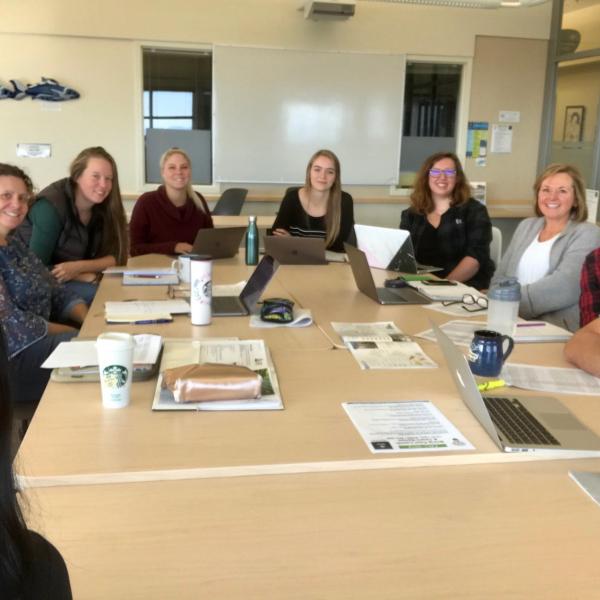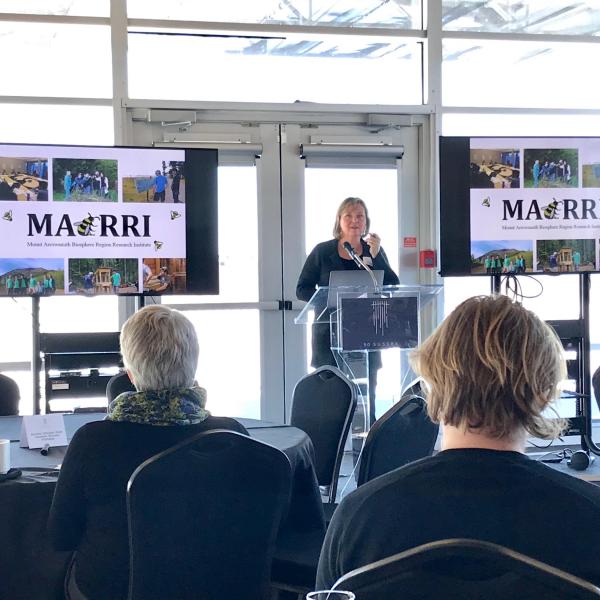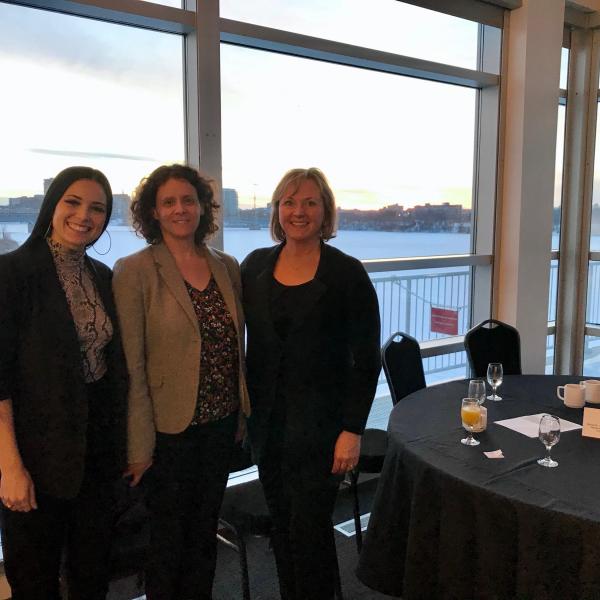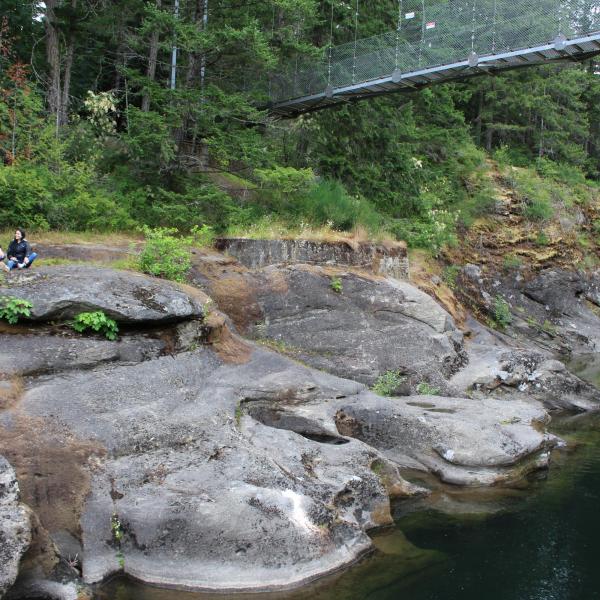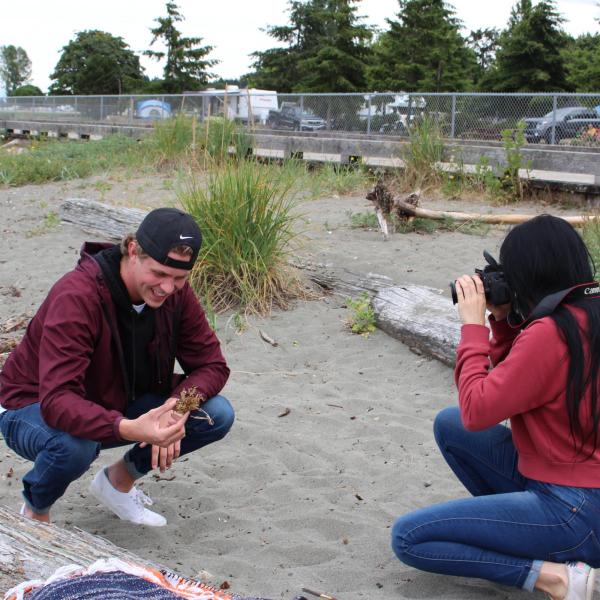VIU and MABRRI have joined the University of Alberta and a handful of other universities across Canada as part of the Canadian Mountain Network (CMN). Over the next 3 years, starting in 2019, VIU will contribute to the CMN's research on mountain ecosystems.
Canadian Mountain Network
Established in 2019, the CMN conducts research in support of the resiliency and health of Canada’s mountain peoples and ecosystems. Research through the CMN aims to inform and guide decision-making and action.
The CMN’s Goals:
-
Enhance our understanding of the impacts of rapid environmental, economic and social change on the resilience of mountain systems.
-
Decision-making and actions at multiple levels are informed by both Indigenous and Western ways of knowing.
-
Enhanced funding for mountain systems research by improving public and policymaker understanding and appreciation of the importance of mountain systems.
-
A diverse and collaborative community of mountain systems researchers, including academic and non-academic indigenous trainees, is supported to co-design and co-deliver projects with knowledge users.
-
Innovative models for partnerships across sectors exist and are shared that empower, respect, and, where useful, bring together Indigenous and Western knowledges and research approaches.
The CMN received funding from the Networks of Centres of Excellence program for the duration of five years. The CMN is a partnership that consists of provincial and territorial governments, the Government of Canada, First Nations and Inuit communities, universities and colleges, and mountain municipalities.


The View from 2117
The View from 2117: Human Actions, Consequences, and Perspectives on Mountain Regions project seeks to understand the impact of human actions on mountain ecosystems, specifically within the Mount Arrowsmith Biosphere Region (MABR). VIU received 3 years of funding for this project. The title of the project, The View from 2117, references both the vertical extent of the MABR from the peak of the mountain to the base within the Salish Sea and the timeframe under consideration in this research. The project looks to the past to map the human impacts on the MABR and then into the future to determine how new policy and regulatory frameworks, ways of being, and advanced knowledge can be used to mitigate or eliminate these impacts. The methodology for this project will be multi-modal and will include demographic analyses, indicator development, field research, surveys, focus groups, and psychological assessments.
The main research question for this study is:
What are the ways in which individual and collective behavior, population growth, regulatory regimes, and societal change have affected and will affect First Nations, mountain communities, and mountain environments over the next century?
To answer the research question five studies are taking place under the main project:
By reviewing and compiling archival and statistical data, the team hopes to uncover community planning techniques used by the First Nations peoples within the MABR before European contact. To do this, our team will review historical maps, plans, journals and photographs. We hope to form this into an annotated bibliography and then a literature review to build a comprehensive review of the way First Nations communities were structured. Additionally, a GIS data base will be used in order to produce layers that show the impact and change over time.
The team is working on creating community profile for the MABR. This entails a mass search for important indicators that appropriately portray the health of the community in terms of social, economic, and environmental factors. In order to do this, the team has been pulling available data from Statistics Canada and other public websites, requested specific data from Statistics Canada, and conducted a literature review and questionnaire. Overall, we hope the report will help stakeholders and policy makers in making decisions in favor of the health of the MABR community.
Through an ecosystem analysis the team aims to identify gaps in current research and available data to gain knowledge on the relevant ecosystem issues in the MABR. The ecosystem analysis will involve reviewing current research and literature available on ecosystems in the MABR, in addition to collecting data through field research. An emphasis will be will placed on Indigenous plants species and ecosystem changes related to climate change. The team hopes that identifying gaps will lead to the development and introduction of new projects that will continue to monitor ecosystem changes and result in issues being addressed.
This study will examine existing policy and regulatory models through literature reviews, database searches, and interviews. The team hopes to uncover a governance model that utilizes collaboration to effectively manage biosphere reserves and mountain ecosystems. A focus will also be put on understanding Indigenous knowledge and governing models. Ideally, this study will influence and guide organizations within the MABR to shift to improved policy and regulatory frameworks that will lessen human/nature impacts.
This study investigated human-nature relationships in the MABR, through a literature review and mixed-methods questionnaire. Community members from six MABR communities were asked about their relationships with the natural environment. Results indicated that the psychological construct of nature-relatedness was felt more strongly than the construct of sense of place—a combination of place attachment, place identity, and place dependence. Nature-based attributes, such as trails, parks, and paths contributed strongly to residents’ sense of place. Sense of place was found to be significantly correlated with both nature-relatedness and with perceptions of views and access to nature. Results add to environmental psychology literature about the extent to which sense of place and nature-relatedness interrelate. Overall, the project adds to an existing discussion of what the MABR means to those who use it and call it home.
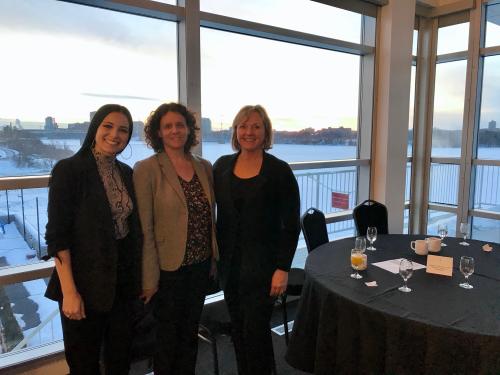
The Team
The project team working on the View from 2117 is interdisciplinary and is comprised of faculty researchers, community partners, and students.
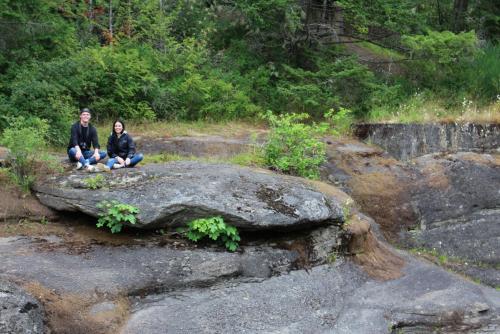
Student Blog Posts
Learn more about what our student Research Assistants have been up to by reading their student blog posts!

